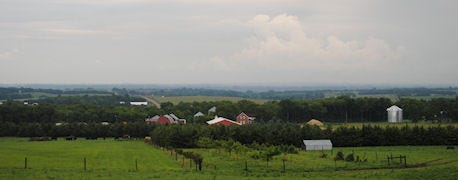
There's good news and not-so-good news for the Northeast weather. Dry weather has allowed spring tillage and cold crop operations to crank up early in much of New England, according to the latest Northeast reports from USDA's National Ag Statistics Service. Maybe too early, as suggested by last week's return visit of Jack Frost.

Spring drought in the Northeast – maybe, maybe not
But New England, in particular, has been abnormally dry through mid-April, according to National Drought Mitigation Center. That's also true for much of New York State and parts of Pennsylvania, as shown on the U.S.Drought Monitor website. The reports are produced by a partnership between the National Drought Mitigation Center at the University of Nebraska-Lincoln, regional climate centers, USDA, and the National Oceanic and Atmospheric Administration.
Data from the Northeast Regional Climate Center showed that areas closer to the coast have seen less than 50% of normal precipitation during the first two weeks of April. But during the last two weeks, two to four inches of rain "dried up" the abnormal dryness rating in north-central Pennsylvania and south-central New York.
Week-to-week soil moisture most indicative
You're well aware that the seasonal ebb and flow of surface and subsurface soil moisture levels make or break crop production and pasture quality. And since April is usually the wettest of the growing season, it doesn't mean much at this stage. What really matters in the week-to-week change.

MID-APRIL DROUGHT MAP: Areas highlighted in yellow were noted as abnormally dry by the National Drought Mitigation Center.
Here's a quick peek at what USDA's National Ag Statistics Service reporters in the Northeast were seeing last week for a combination of surface and subsurface moisture:
• Delaware: 43% to 53% adequate; 34% to 39% surplus
• Maryland: 70% to 79% adequate; 34% to 39% surplus
• New England: 52% to 55% adequate; 45% surplus
• New Jersey: 85% to 86% adequate; 10% to 13% surplus
• Pennsylvania: 75% to 85% adequate; 8% to 18% surplus
About the Author(s)
You May Also Like




